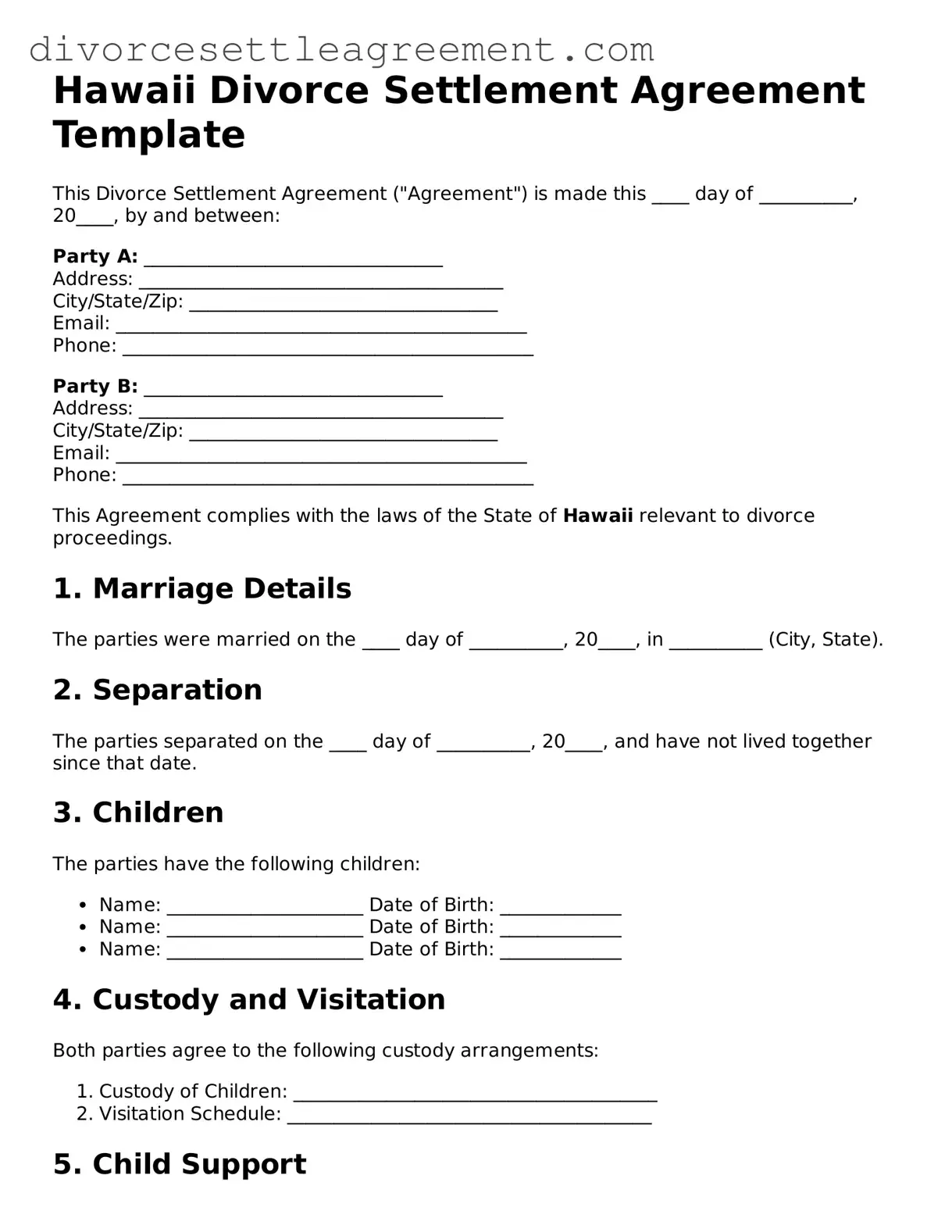What is a Hawaii Divorce Settlement Agreement?
A Hawaii Divorce Settlement Agreement is a legal document that outlines the terms and conditions agreed upon by both spouses during a divorce. This agreement typically covers issues such as property division, child custody, child support, and spousal support. It serves as a binding contract that can be enforced by the court once finalized.
Who should use the Divorce Settlement Agreement form?
The form is intended for couples who are going through a divorce and have reached an agreement on the division of their assets, responsibilities, and any other relevant issues. Both parties must be in mutual agreement for the settlement to be valid and enforceable.
What information is required to complete the form?
To complete the Divorce Settlement Agreement form, both parties need to provide personal information, including names, addresses, and contact details. Additionally, details regarding property, debts, custody arrangements, and support payments must be clearly outlined. Accurate and comprehensive information is essential to avoid future disputes.
Can the terms of the agreement be modified after submission?
Yes, the terms of the Divorce Settlement Agreement can be modified after submission, but both parties must agree to the changes. If modifications are necessary, it is advisable to document these changes in writing and submit them to the court for approval to ensure they are enforceable.
Is legal representation required to complete the agreement?
While legal representation is not required to complete the Divorce Settlement Agreement, it is highly recommended. An attorney can provide guidance, ensure that the agreement complies with state laws, and protect the interests of both parties. Without legal advice, individuals may overlook important legal rights or obligations.
How is the agreement submitted to the court?
Once both parties have completed and signed the Divorce Settlement Agreement, it should be submitted to the family court in the appropriate jurisdiction. This is typically done by filing the document along with any other required divorce forms. It is important to check with the local court for specific submission procedures and requirements.
What happens if one party does not comply with the agreement?
If one party fails to comply with the terms of the Divorce Settlement Agreement, the other party can seek enforcement through the court. The court may order compliance or impose penalties for non-compliance. It is crucial for both parties to understand their obligations to avoid potential legal issues.
How long does it take for the agreement to be approved by the court?
The time it takes for a Divorce Settlement Agreement to be approved by the court can vary. Factors such as court backlog and the complexity of the case can influence the timeline. Generally, it may take several weeks to a few months for the court to review and finalize the agreement.
What should be done if there are disputes after the agreement is finalized?
If disputes arise after the Divorce Settlement Agreement has been finalized, parties may need to seek mediation or legal assistance to resolve the issues. In some cases, it may be necessary to return to court to modify the agreement or enforce its terms. Open communication and a willingness to negotiate can often help prevent escalation.
